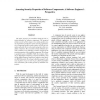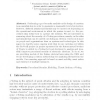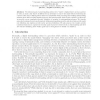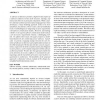101
click to vote
ASWEC
2006
IEEE
15 years 7 months ago
2006
IEEE
The paper proposes an assessment scheme for the security properties of software components. The proposed scheme consists of three stages: (i) a system-specific security requireme...
APSEC
2006
IEEE
15 years 7 months ago
2006
IEEE
This paper introduces a framework for security-oriented software service composition and evolution. Key building blocks of the framework are a semantic model for specifying the se...
107
click to vote
AICT
2006
IEEE
15 years 7 months ago
2006
IEEE
The inherent freedom due to a lack of central authority in self-organized mobile ad hoc networks introduces challenges for security and trust management. Arguably, trust managemen...
101
click to vote
WISA
2007
Springer
15 years 7 months ago
2007
Springer
Multilevel security policies aim at only confidentiality assurance, with less consideration on integrity assurance and weakness in expressing channel control policies. Besides, the...
123
click to vote
VOTEID
2007
Springer
15 years 7 months ago
2007
Springer
Performing a good security analysis on the design of a system is an essential step in order to guarantee a reasonable level of protection. However, different attacks and threats m...
106
click to vote
TCC
2007
Springer
15 years 7 months ago
2007
Springer
The informal goal of a watermarking scheme is to “mark” a digital object, such as a picture or video, in such a way that it is difficult for an adversary to remove the mark wit...
TCC
2007
Springer
15 years 7 months ago
2007
Springer
We investigate whether security of multiparty computation in the information-theoretic setting implies their security under concurrent composition. We show that security in the sta...
TCC
2007
Springer
15 years 7 months ago
2007
Springer
Abstract. Cryptographic protocols are often designed and analyzed under some trusted set-up assumptions, namely in settings where the participants have access to global information...
STACS
2007
Springer
15 years 7 months ago
2007
Springer
Abstract. In many security protocols, such as group protocols, principals have to perform iterative or recursive computations. We call such protocols recursive protocols. Recently,...
102
click to vote
SEKE
2007
Springer
15 years 7 months ago
2007
Springer
A software architecture provides a high-level description of a software solution in terms of the structure, topology, and interactions between its principal components. While a nu...




